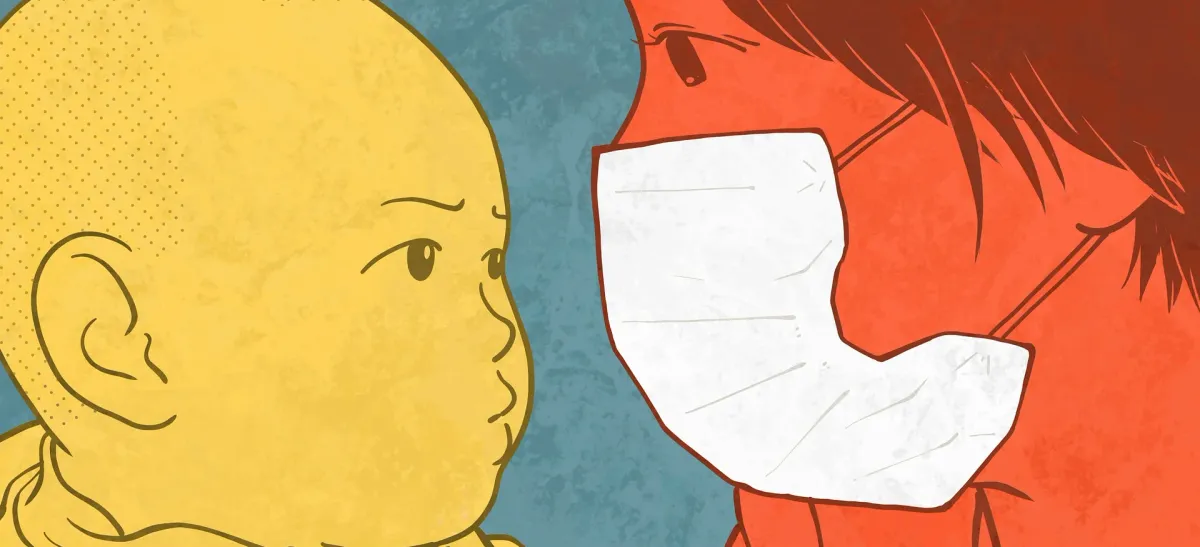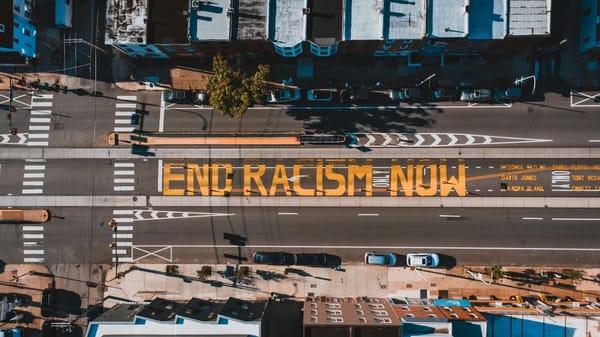The Past Year Has Made Environmental Racism Even Worse for People of Colour in the UK
The air pollution crisis was already smothering BIPOC communities, but Covid-19 and the new plastic pandemic have considerably stacked the odds against them.

Access the Audio Read version of this article directly on Spotify for Podcasters.
“Despite the UK government’s £3.8 billion plan to protect vulnerable communities from air pollution, the country still has a long way to go in recognising and offsetting the impact of institutionalised environmental racism. Communities of color are not, and have never been an institutional priority.”
Environmental racism isn’t new, but it has never been worse. In the UK specifically, marginalised and ethnically diverse communities are thrice as likely as others to be exposed to pollution daily, and live in areas close to waste incinerators (Source: Guardian). People of colour, Indigeneous people, and Black people are also statistically more likely to live in areas with poor air quality levels, closer to landfills, and be hit by natural disasters way worse than white communities (Source: American Lung Association) – with catastrophic effects on their overall health. Over the last 13 months, the Covid-19 pandemic widened the divide between the rich and the marginalised, and an environmental crisis that had been simmering under the surface reached unprecedented proportions. As always, black and POC communities are bearing the brunt.
As the pandemic suddenly forced people to find ways to protect themselves and their loved ones, panic levels skyrocketed, and so did our use of single-use plastic. Protective gear such as disposable surgical face masks, rubber or plastic gloves, and face shields suddenly became essential for people outside of the medical space, in order to simply step out and live their lives. Restaurants and grocery stores also favoured ‘safe’ (read: single-use) packaging over more environmentally friendly options like paper and cloth, and it became routine to see streets littered with discarded masks and plastic hand gel bottles on our daily walks.
According to a report by ScienceDirect, approximately 3.4 billion single-use face masks or face shields are discarded every day, globally. “We have seen a great deal of what is ‘PPE litter’, which is a new category of plastic litter unique to this period and a growing concern,” says Jemma Bere of Keep Wales Tidy, a charity working across Wales to protect the environment. “Anecdotally, from our volunteer groups, we have estimated that PPE litter is present on around 50% of our streets at the moment.”
While plastic waste affects everyone, residents from Black, Indigenous, and POC backgrounds are the most vulnerable to the impact of the mounds of plastic we generate every day. Landfills and hazardous waste facilities are disproportionately located in the communities of people of colour, and can lead to increased health risks, such as the development of respiratory and fatal illnesses, including lung cancer. Last year, Greenpeace found that “areas in the top 20% for deprivation” hosted nearly a third of the waste incinerators in the UK.
The correlation between plastic waste and environmental racism is clear when you look at the data. And in the UK alone, people of colour now have to deal with even more plastic pollution and hazardous waste incineration near their homes than before the pandemic. There could be more than 20,000 tonnes of plastic masks in UK landfill sites by Spring 2021 (Source: BBC ), and they will most likely have to be burnt.
The impact on air and soil pollution is set to be disastrous for local residents. “Plastic never really disappears and just breaks down into ever smaller pieces, microplastics”, Bere explains. “The toxins that go into making plastics leach out into the environment and cause significant harm to wildlife and disruption to entire ecosystems.”
Already more vulnerable to catching and dying of the virus, BIPOC communities have the odds stacked against them, with systemic racism preventing them equal access to healthcare facilities, support systems, the privilege of staying home and adequate protective equipment.
Devastating findings in a report by the Office for National Statistics and National Health Service in 2020 revealed “2.5-fold to 4.3-fold greater Covid-19 mortality rates across a range of Black and South Asian ethnic groups compared with white groups”. In a sample study by The Conversation, Black patients were found to be 30% more likely to die within 30 days of hospital admission, compared to white patients of a similar age and health status. In that same study, Asian patients were 49% more likely to die. Black patients were also 80% more likely to be admitted to intensive care and in need of invasive mechanical ventilation. This number reached 54% for Asian patients.
On top of a pandemic and its emotional hardships, the threat of plastic waste piling up poses a dual threat to these communities – and the waste is not even theirs. “There is a link between areas of deprivation and littered environments, although it is important to note that this does not necessarily mean that these communities litter more than others, but the area they live in may look or feel more run down and therefore attract more anti-social behaviour, such as littering and fly-tipping (often called ‘Broken Window Theory’)” says Bere.
A 2020 study (Source: ClinMed) requested by the European parliament showed that plastics don’t really have an “end of life”, but are disposed of in one of 4 ways: landfilling, incineration, recycling and unaccounted methods.
Living in and around areas close to landfills directly puts residents of colour at greater risk of dying of Covid-19 too, as they often suffer from respiratory conditions, lung cancer, asthma and other related diseases resulting from the degradation of plastics into the soil – with plastic additives like stabilisers, harmful colorant moieties, plasticisers and heavy metals leaching into soil and water.
When these plastics finally decompose, they release carbon dioxide and methane into the atmosphere. Their incineration also releases greenhouse gases and other potentially dangerous compounds, such as heavy metals, dioxins, PCBs and furans, causing poor air quality.
Ella Kissi-Debrah, a 9-year-old Black child who lived in Lewisham, “mysteriously” died in 2013. In December 2020, an inquest ruled that her death was caused by acute respiratory failure, severe asthma and “exposure to excessive air pollution”. The coroner pointed out that Ella had lived her entire life in an area where nitrogen dioxide emission levels exceeded both EU and national legal limits. Ella was exposed to nitrogen dioxide and PM (particulate matter) levels well over what the World Health Organization deems safe, which contributed to her fatal asthma attack. Ella was the first person in the UK to have air pollution listed as a cause of death.
To this day, Ella Kissi-Debrah’s death still vividly illustrates the direct harm of the environmental crisis in the lives of Black people and communities of colour in Britain. Despite the UK government’s £3.8 billion plan to protect vulnerable communities from air pollution, the country still has a long way to go in recognising and offsetting the impact of institutionalised environmental racism. Communities of color are not, and have never been an institutional priority.
Reports of people of color being the worst affected by the pandemic have circulated since March 2020, and not because they are more genetically prone to catching the virus. Systemic racism keeps away access to healthcare, the ability to socially distance or work from home, and even access to medical equipment such as ventilators. BIPOC communities have also been laid off at far higher rates, shouldering the brunt of the economic impact the pandemic has had – and reducing the chances of having the financial ability to access private medical treatment.
Environmental racism, fuelled by the new plastic waste crisis, is just one more way of perpetuating and magnifying the same inequities. And in a country where a Race Report tries to make us believe the system isn’t rigged against people from ethnic minorities, numbers do not lie.





